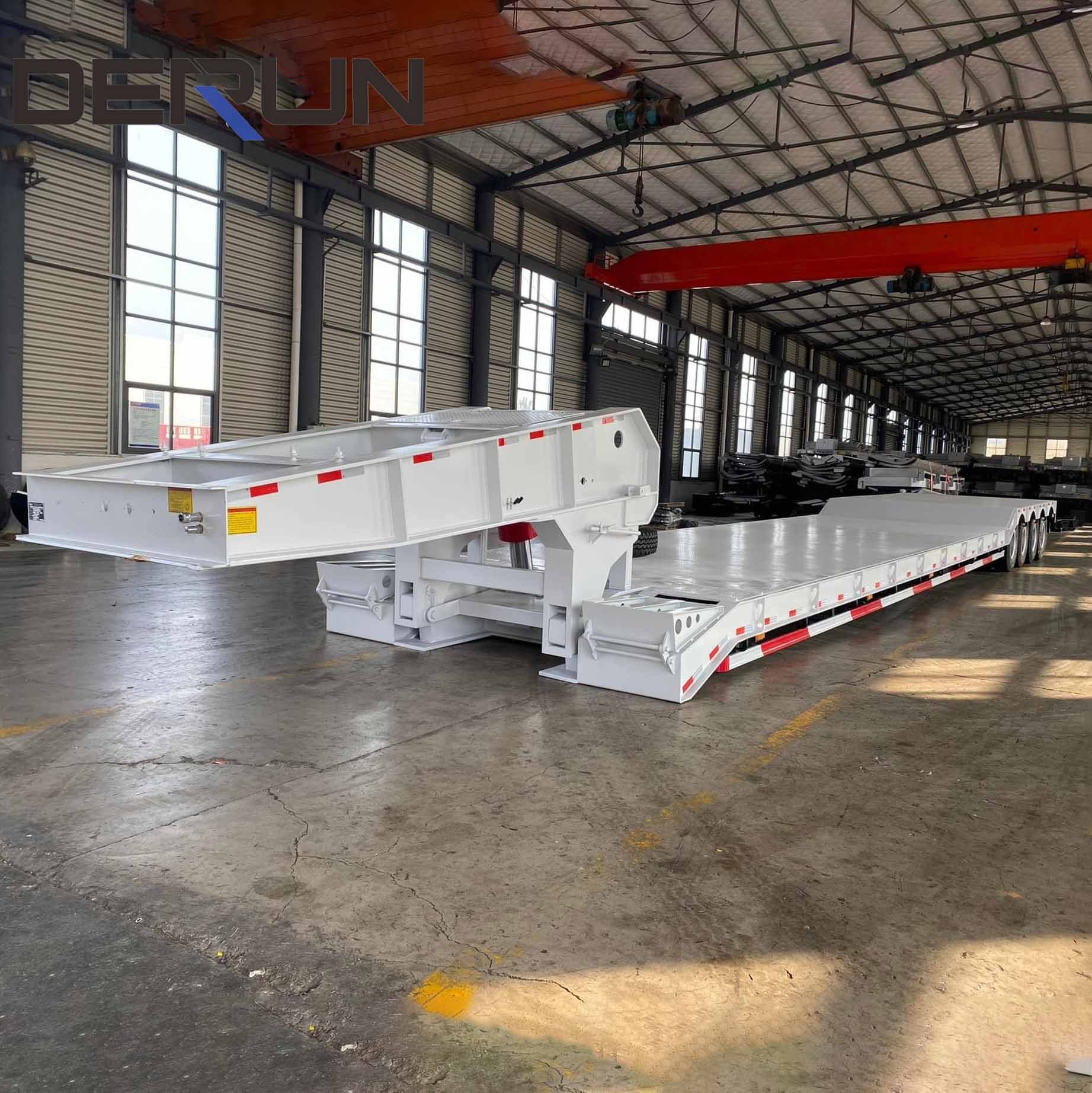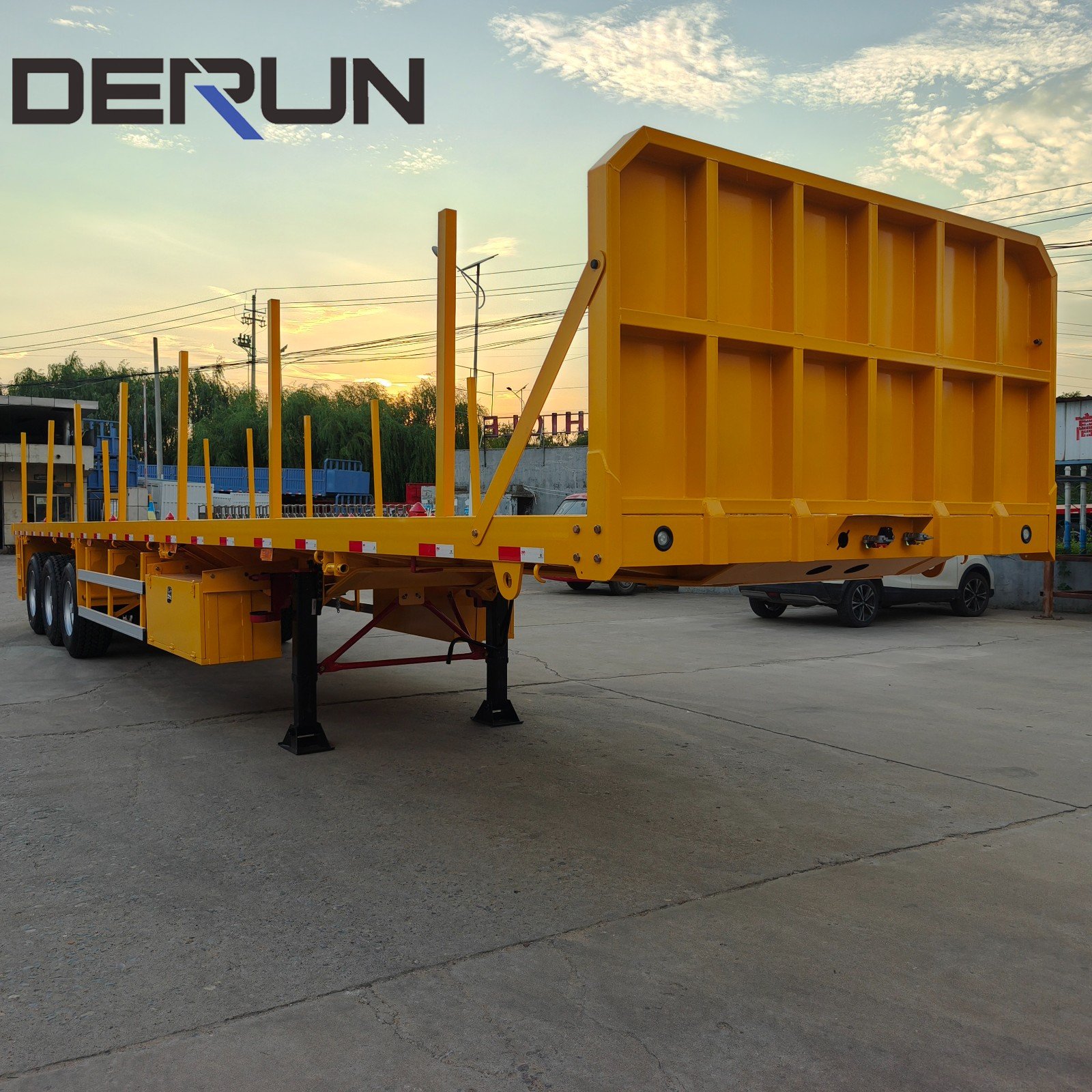Flatbed semi-trailer and lowbed semi-trailer are two different types of transport means, and there are significant differences between them in terms of structure, usage, loading capacity and applicable environment. The following is a specific comparison of these two models:

First, the structural design
The body is usually made of high-strength steel, and the structure is sturdy and durable.
The frame is a through-beam structure, the longitudinal beam is flat or gooseneck, and the height of the belly plate is moderate.
It has good anti-corrosion performance, and the surface of the body is made of non-slip material.
Usually adopts concave beam type (or well type) frame, the front part of the frame is gooseneck, the middle part is cargo platform (the lowest part of the frame), and the rear end is wheel frame.
The main level of the cargo platform of the frame is low, which ensures the smoothness of transport.
Made of wear-resistant steel plate, the whole vehicle structure is solid and solid, light weight, easy to manoeuvre.

Loading capacity
Flatbed semi-trailer
It is suitable for loading large and heavy goods with relatively high loading surface.
There is no railing in the loading part of the vehicle, which is widely used, but the loading height is limited.
Low-flat semi-trailer
Due to its low profile design, it can load higher cargoes, such as heavy vehicles and construction machinery.
With low centre of gravity, it has better stability and safety and is suitable for transporting super-high goods and passing overhead obstacles.

III. Scope of application
Flatbed semi-trailer
Suitable for long-distance highway transport, high efficiency and stable transport effect.
Applicable to various road conditions, but compared with the low-flatbed semi-trailer, the adaptability in the city roads and complex environments is slightly inferior.
Low-flatbed semi-trailer
Mainly applicable to city roads and road transport, especially suitable for long-distance logistics transport.
It needs to be driven under good road conditions to ensure stability and safety.
Safety Performance
Flatbed semi-trailer
The support bar on the upper part of the carriage has better reinforcement performance, which is relatively more stable and safe.
Equipped with perfect safety devices, such as ABS anti-lock braking system, etc., to improve driving safety.
Low-flatbed semi-trailer
Due to the low height of the whole vehicle, the cargo is easy to collide with the roof, and there is a certain safety risk.
The pressure of the axle on the road is not uniform enough, which is easy to lead to rollover, so it needs to pay more attention to stability and safety in the process of driving.

V. Useful life
Flatbed semi-trailer
The structure is more complex, the service life will be affected by the body surface anti-corrosion layer and support rods and other parts.
Low plate semi-trailer
The design is relatively simple, sturdy structure, service life is usually longer than the flatbed semi-trailer.
In summary, there are significant differences between flatbed semi-trailers and low-flatbed semi-trailers in terms of structural design, loading capacity, scope of application, safety performance and service life. When choosing, comprehensive consideration should be made according to the specific transport needs and conditions to ensure that the most suitable means of transport is chosen.




